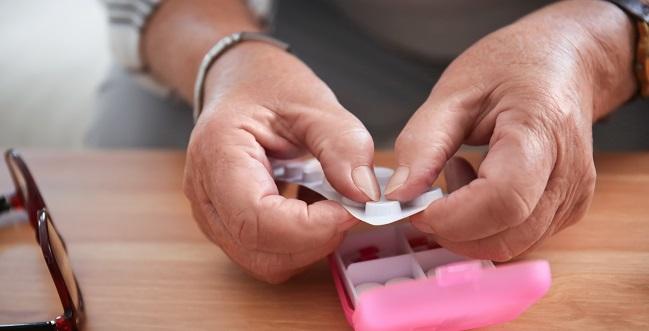Small Study Hints Rivaroxaban Helps Cut Stroke in A-fib Patients Post-TAVR
In high-risk patients, rivaroxaban and warfarin plus aspirin were similarly protective against thromboembolic events.

NATIONAL HARBOR, MD—In patients with A-fib who require TAVR, rivaroxaban (Xarelto; Bayer/Janssen) and warfarin appear equally effective at preventing stroke out to 3 years, according to the results of a small, single-center study presented here at CRT 2020.
In a propensity-matched analysis, the composite incidence of stroke and all-cause mortality (primary endpoint) was 36% in the warfarin group and 32% in the rivaroxaban group at a median follow-up of 32 months (log-rank P = 0.697). Bleeding events were numerically higher in the rivaroxaban arm, but this was not statistically significant (P = 0.062) given the low patient numbers.
Although the recent GALILEO trial demonstrated an increase in death or thromboembolic events and bleeding in patients who received routine oral anticoagulation following TAVR, the situation may be much different for those who actually have an indication for thromboembolic protection, said Alexis K. Okoh, MD (RWJBarnabas Health, NJ), who presented the data in an abstract session on February 22, 2020.
“In GALILEO, atrial fibrillation patients were excluded. What our data suggest is that if a patient has an actual indication, they may be a good candidate for a [non-vitamin K antagonist oral anticoagulant],” he told TCTMD. He added that the data should be reassuring for clinicians who encounter patients like these frequently and struggle with how to manage them.
Paying Attention to Indication
Okoh and colleagues conducted the retrospective study of 151 A-fib patients from their institution who underwent TAVR between 2012 and 2015. Of these, 121 were discharged home on warfarin plus aspirin and 31 were discharged home on rivaroxaban plus aspirin. All patients undergoing TAVR were considered high risk, with STS mean scores of 9.2 in the rivaroxaban group and 9.0 in the warfarin group. The majority in both groups were NYHA class III/IV.
In addition to being small and nonrandomized, Okoh noted that the definition of valvular A-fib is not clear, making it difficult to determine if the population was truly comparable. The analysis also may not have completely accounted for duration of medication treatment in all study participants.
A similar ongoing study, ENVISAGE-TAVI AF, is expected to provide more clarification on this issue, Okoh said. That trial is comparing edoxaban (Savaysa; Daiichi Sankyo) to a vitamin K antagonist after TAVR in patients with A-fib, with follow-up expected out to 3 years.
“The end goal of all of this is to prevent thromboembolic events, which are very catastrophic,” he said. “Based on our little study, you can send the patient home on an appropriate dose of rivaroxaban. But it is still an area that we need to explore extensively to see what more we can do for these patients.”
Session moderator Umberto Barbero, MD (Santissima Annunziata Hospital, Savigliano, Italy), wondered whether it may be possible in the future to drop the aspirin portion of the medical therapy in these patients.
Okoh said the issue comes down to why patients are on aspirin in the first place.
“If the indication is for primary prevention of stroke, then dropping it might be a really good idea because most of the trials have shown that aspirin might not really be effective for primary prevention,” he reiterated to TCTMD. “But if the indication is for secondary prevention, then we definitely have to keep it.”
A recent post-hoc analysis of PARTNER II data showed that for patients with atrial fibrillation who undergo TAVR, being discharged on antiplatelet therapy helped reduce the risk of stroke at 2 years, whereas oral anticoagulants alone were not sufficiently protective.
L.A. McKeown is a Senior Medical Journalist for TCTMD, the Section Editor of CV Team Forum, and Senior Medical…
Read Full BioSources
Okoh AK. Rivaroxaban vs warfarin for stroke prevention in patients with atrial fibrillation undergoing TAVR. Presented at: CRT 2020. February 22, 2020. National Harbor, MD.
Disclosures
- Okoh reports no relevant conflicts of interest.


Comments